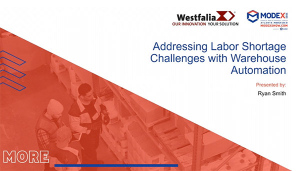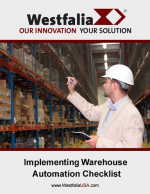Protecting Your Brand and Your Customers in Case of Recalls
Approximately 48 million people in the United States fall victim to foodborne illness each year, as reported by The Centers for Disease Control and Prevention.
With devastatingly high numbers and outbreaks of E.coli and other types of bacterial contamination becoming regular fixtures in the news, the Food and Drug Administration (FDA) continues to implement more stringent standards and regulations, including the Food Safety Modernization Act (FSMA). Despite legal precautions, contaminated goods are still often undiscovered until they have already reached store shelves. The result is not only ill consumers, but costly, brand-damaging recalls.
In order to mitigate recalls and their detrimental effects, food and beverage manufacturers and distributors –— are turning to automation. A Warehouse Execution System (WES) utilizing an Automated Storage and Retrieval System (AS/RS) is one of the chief technologies making waves in an effort to reduce, if not prevent, recalls, through sophisticated track-and-trace capabilities.
With a WES and integrated AS/RS, food and beverage manufacturers can obtain real-time insight into their inbound and outbound inventory, including when shipment arrives, when it departs, and where it is going. Therefore, if a product (a soft drink, for example) is recalled, it is easy to look into the system and quickly identify the batch that contained the faulty goods, pinpoint when it departed and to where, and pull all items from that batch from the shelves.
By identifying and pulling the exact batch, manufacturers do not have to waste valuable time and money removing every product from stores in an attempt to remove all contaminated items. And, with reliable data, manufacturers can prove compliance with any relevant safety regulations and confidently assure consumers that they have taken fast and thorough action to withdraw all necessary products.
Also, within the warehouse, traceability data can indicate if any contaminated products are still among inventory. If this is the case, manufacturers can remove these goods before they are even shipped, and make sure that perfectly good, uncontaminated products do not go to waste.
While quickly reacting to recalls is great, preventing them from happening in the first place is even better.
What’s Related



Favorites





